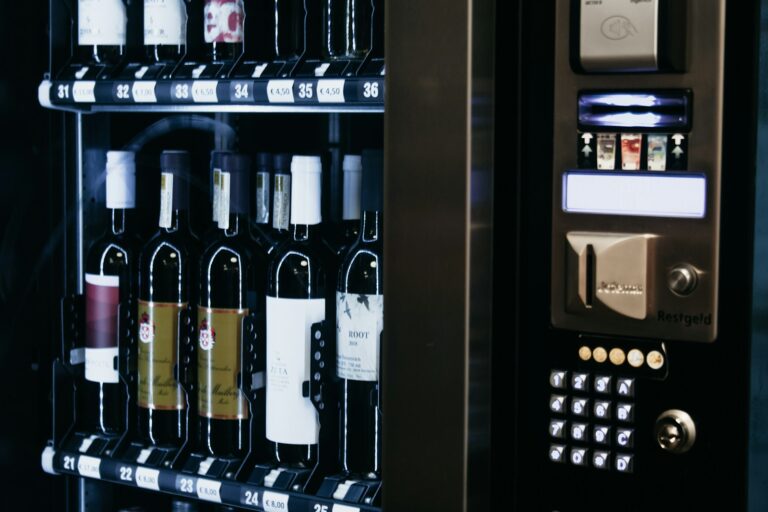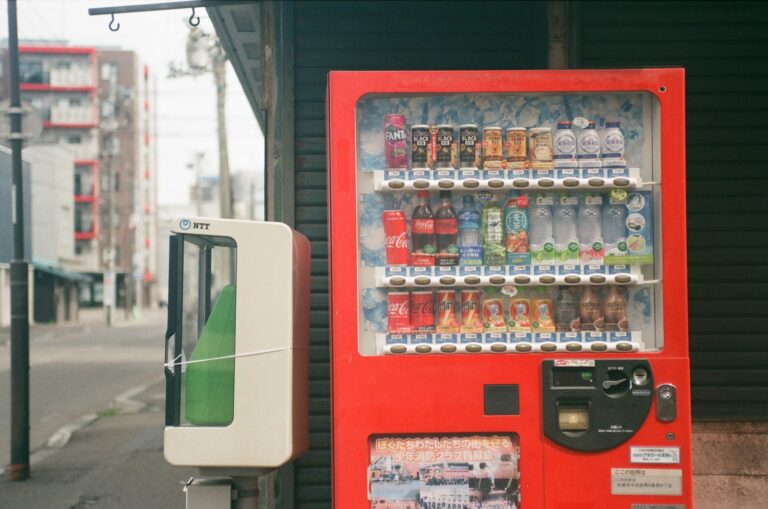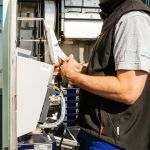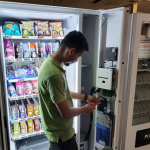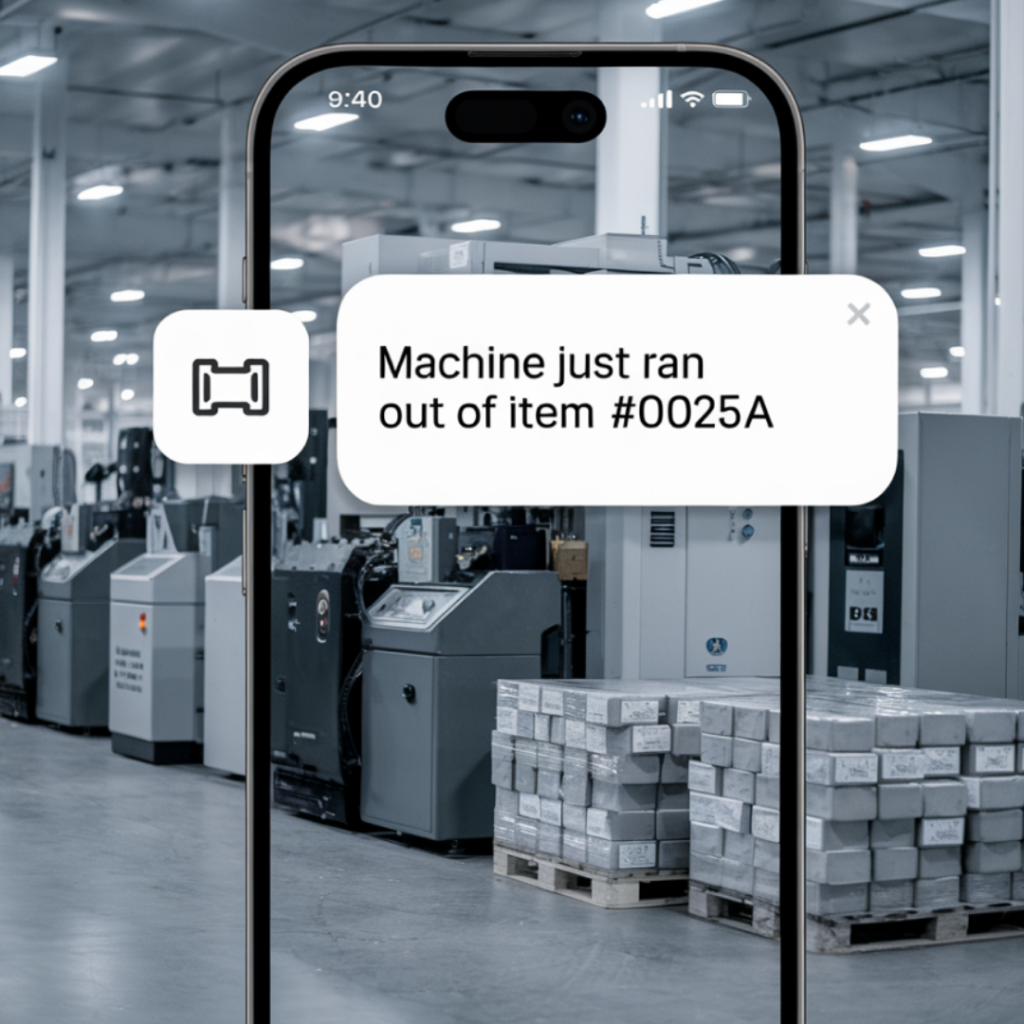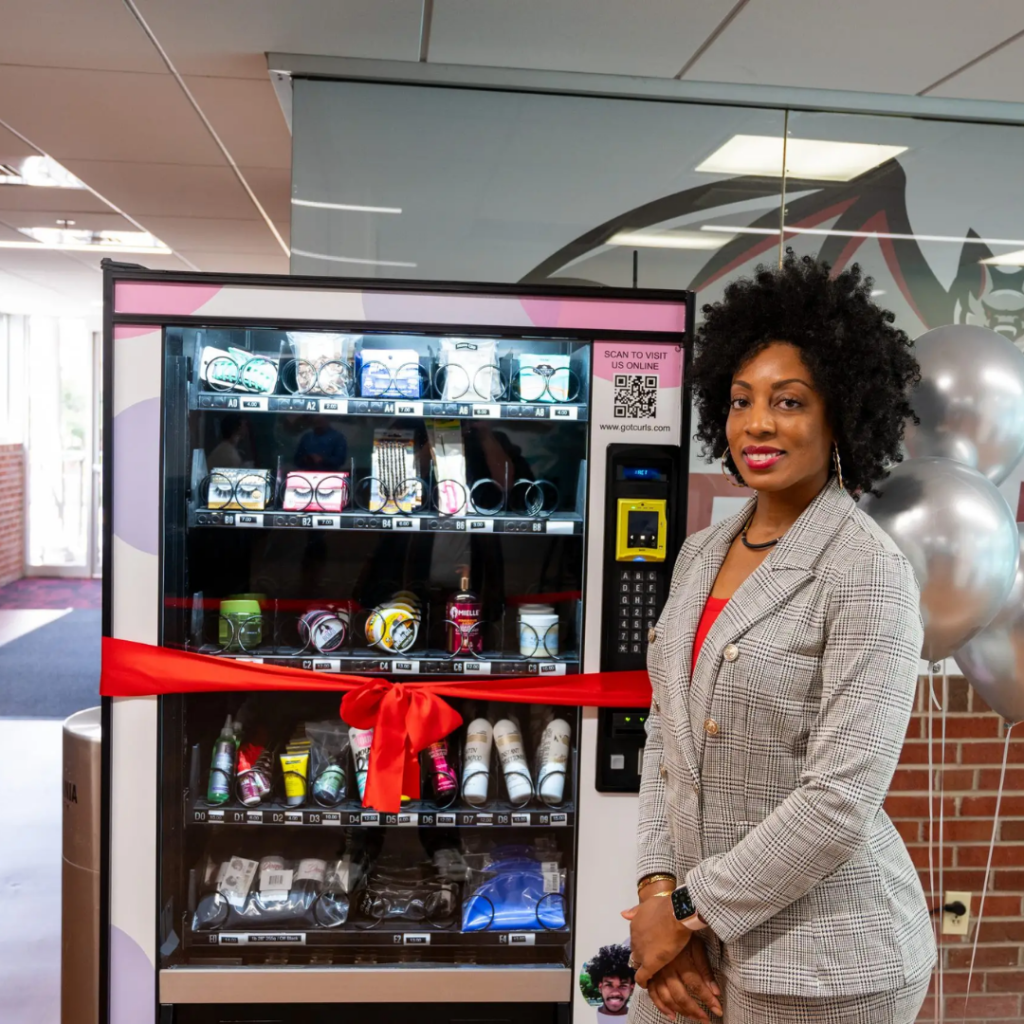How to Plan Cash Flow in Your Vending Business
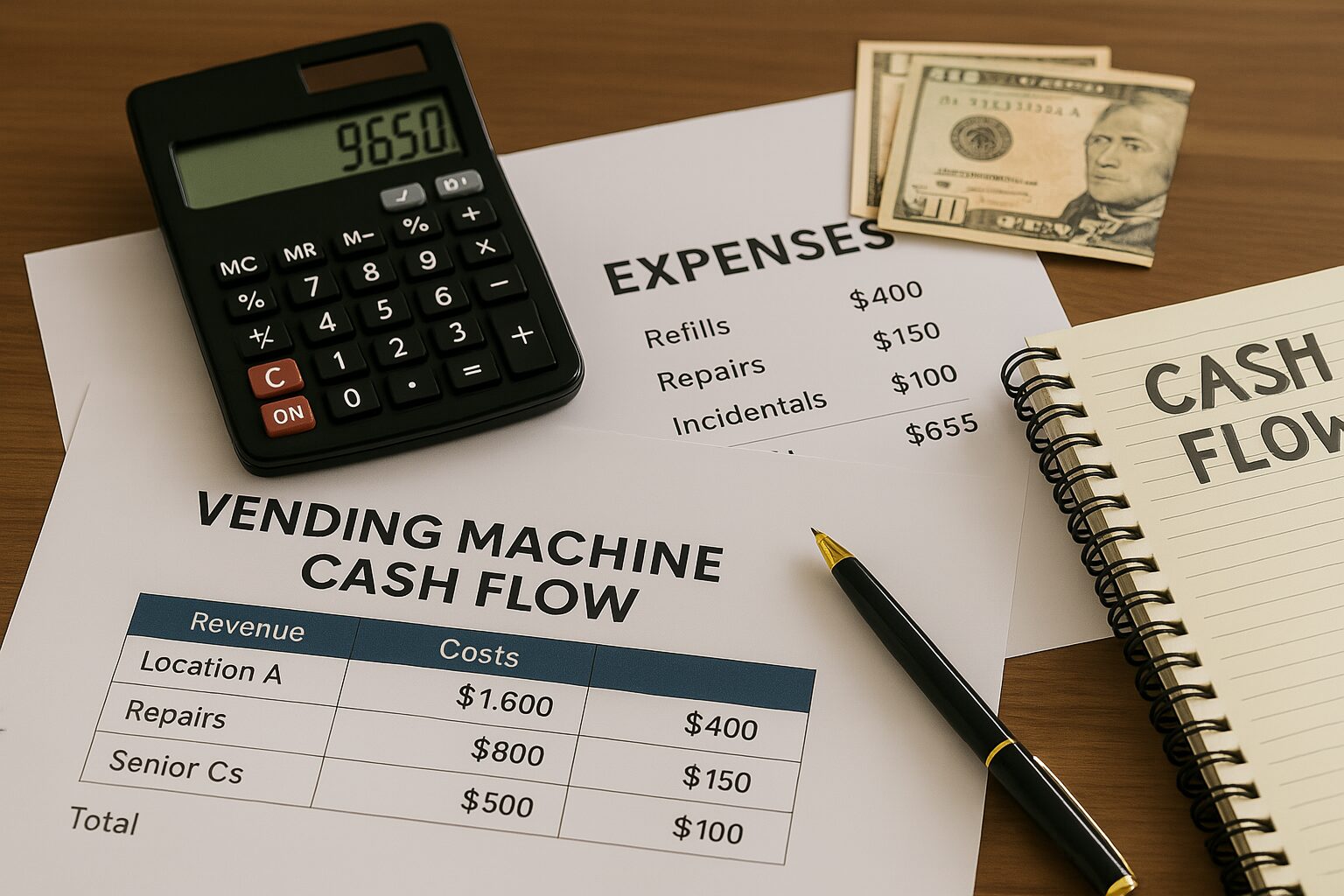
Why Cash Flow Should Be Your First Priority
In vending, the difference between “extra income” and “sinking cost” is cash flow. Before you think about equipment or snacks, you need to understand how money moves in this business—how it comes in, how fast it leaves, and what makes the difference.
This resource breaks it down using real-world examples from a vending operator who ran two different locations. One made solid profits. The other didn’t break even. The machines weren’t the problem. The money flow was.
Location Makes or Breaks Your Profits
Let’s compare two actual vending placements:
Underperforming Location: Technician Office (4 Machines)
- Revenue over 40 days: $892
- Machine type: Older drink/snack units
- Problems:
- Constant technical issues
- No card readers (mostly cash-only traffic)
- Low visibility and engagement
- Long drive time for refills
- Outcome: Machines removed after 6 weeks due to poor return and high effort
High-Performing Location: Senior Apartment Complex (2 Machines)
- Revenue in 30 days: ~$1,800
- Machine type: New combo machines (cashless-ready)
- Advantages:
- Easy walk-up access for residents
- Strong daily foot traffic
- Near operator’s home for quick refills
- No downtime
- Outcome: ~$900 net profit with consistent growth potential
Bottom line: The location determined the outcome—not the number of machines.
What to look for in a high-performing location:
- Indoor placement with climate protection
- Foot traffic that matches product demand (e.g., drinks in gyms, snacks in offices)
- Proximity to your home or warehouse
- Friendly property managers who allow you to refill and maintain easily
- Secure access and no late-night vandalism risk
How Much You’ll Spend to Get Started
Let’s break down a realistic starter setup using new equipment.
| Category | Estimated Cost |
|---|---|
| New Combo Machine | $4,200 |
| Card Reader | $400 |
| Initial Inventory | $250 |
| Dolly & Small Tools | $150 |
| Total Upfront | ~$5,000 |
If you use financing through VMFS USA™’s partners, you can reduce upfront cost and spread it monthly, often starting under $200/month depending on your credit.
Monthly Expenses to Expect
Once your machine is placed and stocked, your ongoing cash flow depends on three things: how fast you sell, how often you restock, and how much downtime you avoid.
| Expense | Low Traffic Site | High Traffic Site |
|---|---|---|
| Monthly Inventory Restock | ~$100 | ~$300 |
| Payment Processing Fees (3%) | ~$15 | ~$45 |
| Travel / Fuel / Time | ~$50 | ~$20–$30 |
| Maintenance or Repairs | ~$50–$100 (used) | ~$0 (if new) |
| Total Monthly Cost | ~$200–$250 | ~$400–$450 |
Why these numbers matter: A poorly performing machine still costs you money every month. But a well-placed machine pays for itself quickly and scales naturally.
Real Cash Flow Scenarios
These are real numbers from a small vending operator who ran both setups side by side.
Poor Location
- 4 machines over 40 days: $892 gross
- Cost of inventory, fuel, and repairs: ~$600
- Net Profit: Under $300
- Effort Level: High — frequent drive time and manual restocking
- Result: Machines removed, location scrapped
Great Location
- 2 machines over 30 days: $1,800 gross
- Cost of inventory and refills: ~$850
- Net Profit: $900+
- Effort Level: Low — 1 restock/week and no repairs
- Result: Profit reinvested, placement kept
The lesson: Cash flow isn’t just about how much you make. It’s about how easily you make it.
What Makes a Machine Earn More
A machine earns more when three things align:
- The Right Location
- Daily traffic with people staying onsite
- Limited food or drink alternatives
- Property manager supports the machine
- Reliable Wi-Fi or cell signal for card readers
- Product–Audience Fit
- Blue-collar site? Energy drinks and snacks.
- Senior apartments? Water, juice, ready meals.
- Gyms? Protein bars, coconut water, low-sugar snacks.
- The best products aren’t your favorites—they’re what your customers already buy elsewhere.
- Low Downtime
- Every day a machine is off = lost revenue
- Used machines often fail here (coin jams, display issues, cooling failures)
- Newer machines with tested parts and reliable service = more consistent cash flow
Cash Flow Mistakes That Kill Growth
Many new operators lose money not because vending doesn’t work, but because they make avoidable cash flow mistakes.
Here are the most common ones:
- Placing too many machines too fast
Scaling up before you validate what works. Always prove the first location before expanding. - Buying used without backup cash
Older machines break. If you don’t have $300–$500 buffer for repairs, a $1,200 machine can cost more in downtime than it’s worth. - Poor inventory management
Buying in bulk to “save money” on items that don’t sell ties up cash. Dead stock is worse than no stock. - Ignoring real margins
If you sell a $1.75 drink that costs you $1.10 and pay 3% processing + gas + restock time, your actual profit is lower than it looks on paper. - Not separating vending income from personal use
Mixing funds = no visibility into whether your business is growing. Use a basic spreadsheet or app. - Underpricing products
Trying to match gas station prices is a mistake. You offer convenience—charge accordingly. Most successful operators set 2x COGS as a baseline markup.
How VMFS USA™ Supports Cash Flow
At VMFS USA™, we help first-time operators protect their cash flow—not just buy equipment.
Here’s how we do it:
- Flexible Financing Options
Spread your machine cost over time with soft credit check financing. Avoid draining your savings to get started. - Real Machine Recommendations
We won’t sell you a machine that doesn’t fit your location. If it’s not a good match, we’ll say so. - High-Uptime Machines
Every vending machine we sell is ADA-compliant, tested for durability, and built for real-world performance. Less downtime = more cash flow. - Post-Sale Support
Restocking questions? Inventory issues? We help you think like an operator, not just a buyer. - Operator Resources
Our growing resource hub offers real-world examples, location ideas, and breakdowns like this to help you earn more, spend smarter, and scale wisely.
Final Thoughts: Cash Flow = Control
A vending machine business isn’t about buying a machine—it’s about buying a system that pays you back. The only way that system works is if cash flow stays healthy and predictable.
Before you place your first order:
- Start with one good machine in one good location.
- Track every dollar in and out.
- Choose a vendor that gives you backup, not just boxes.
Because vending success isn’t about luck. It’s about control.
FAQs
How much profit should I expect from one vending machine?
Typical net profit ranges from $150–$400/month per machine, depending on the location and product mix.
How long does it take to break even?
Most operators break even within 6–10 months if the machine is placed well and maintained properly.
What’s the average startup cost for one machine?
$4,500–$5,500 for a new combo machine with a card reader, plus $300–$400 for initial inventory and tools.
Can I start vending part-time?
Yes. Many successful operators restock once or twice a week while working a full-time job.
Do I need a business license or LLC to start?
In most cases, yes. A vending business is a real business and requires compliance with state and local laws. VMFS USA™ can guide you toward common setup steps, but check with your local municipality for exact requirements.

